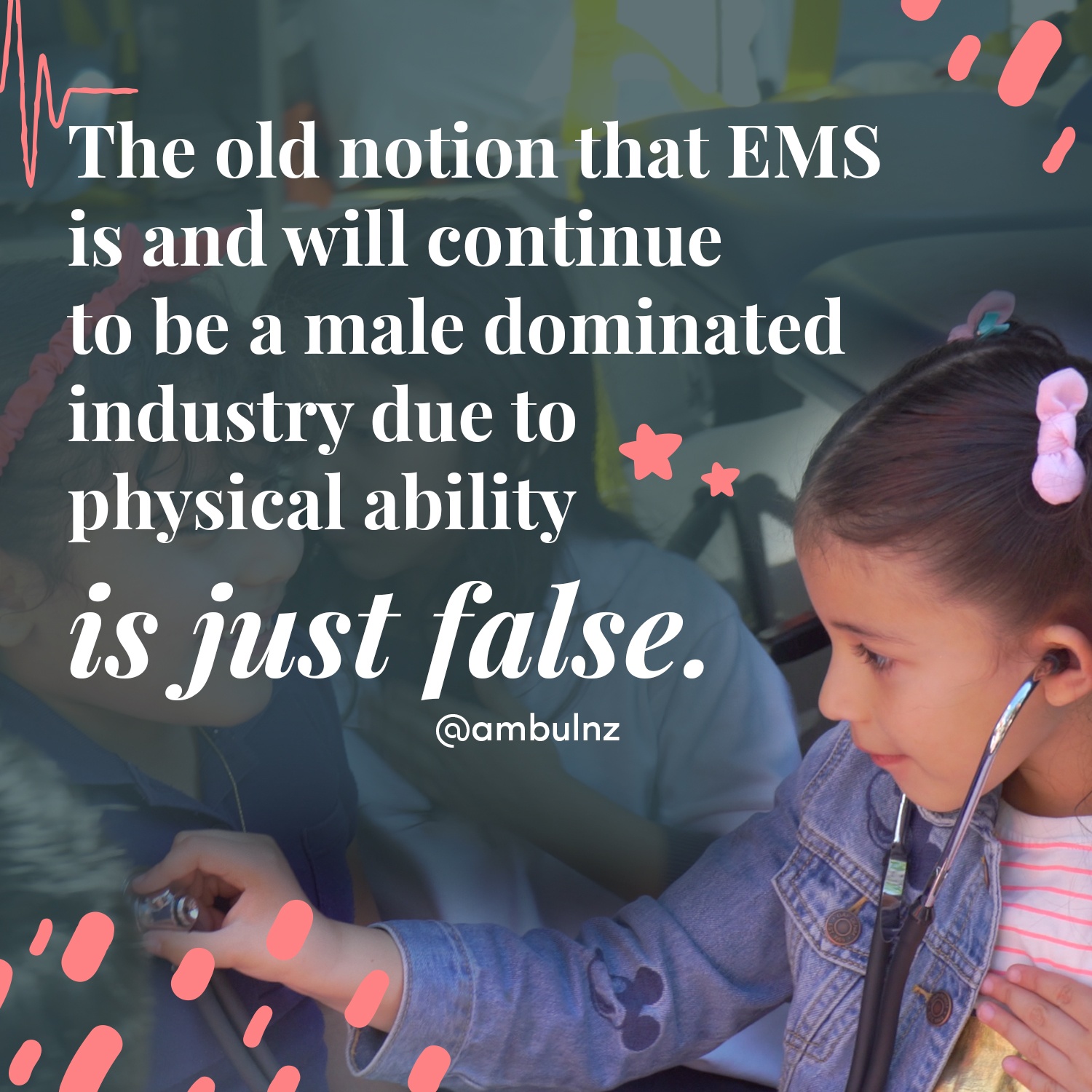By: Stan Vashovsky, CEO of Ambulnz
Over the past decade, multiple industries have made a collaborative effort to further women’s equality in the workforce, primarily by increasing women’s salaries to match male counterparts and active participation in female focused initiatives. For those who think this is “just a phase of a current social climate,” think again. Many studies present conclusive evidence to demonstrate that companies who not only hire more women, but also place women in higher positions, typically do better business and achieve better results. Women in the workforce is a growing trend across all sectors.
But even with all of the hard data substantiated by reputable sources, proving women add substantive value, it still seems some industries are set in their ways, specifically the EMS community. According to the National Registry of Emergency Technicians, 75% of nationally certified EMS professionals in the United States are male.
Here’s part of the reason why…
The Center for the Health Professions at UC San Francisco conducted a report in 2004 stating, “Historically, emergency medicine has been a male-dominated field. In the early 1970s, when emergency medical services began to expand, many returning Vietnam War veterans, who had experience flying wounded soldiers in helicopters, became EMTs/Paramedics. Another reason for male dominance in emergency medical services is that fire services played a large role in the development of EMS. Many localities chose fire departments to be responsible for emergency care provision in the early 1970s, and fire departments have traditionally been male- dominated.” One of the biggest reasons for male domination in fire departments is the incredible strength, stamina, and endurance candidates must display. Every firefighter must pass the CPAT (Candidate Physical Ability Test) which is a physically demanding test and favors male candidates. For example, one of the requirements specifically states, “…continue to perform three 5-minute intervals of stepping; progressively add weight to the knapsack as your fitness improves so that you can step with 50 pounds of additional weight. (This 50-pound knapsack and work gloves should be worn in training for all subsequent events of the CPAT.) In addition, carry 10-15 pounds (dumbbell, sand filled plastic container) in each hand while stepping. The total weight carried (knapsack plus hand-held weights) should equal approximately 75 pounds.1”
So, while it may seem like this trend will continue, there is actually much more evidence to suggest the contrary.
Health-care policy makers are pushing initiatives to decrease the “you call, we haul” approach and move into a more cost-effective, practical model of EMTs providing regularly scheduled house calls. With this revolutionary shift into the healthcare delivery space, the need for a “woman’s touch” becomes much more important than brute strength.
A graduate thesis provided by the University of Montana ScholarWorks at University of Montana cites, “Scholars agree that communication skills are often utmost in importance for health care professionals. One reason for the critical nature of communication skills in health care is the potentially life and death nature of the communicative event.” In addition to better communication, Dr. Daniel Goleman Ph.D. says, “Women tend to be better at emotional empathy than men, in general. This kind of empathy fosters rapport and chemistry. People who excel in emotional empathy make good counselors, teachers, and group leaders because of this ability to sense in the moment how others are reacting. 2”
There are also studies that demonstrate women are calmer in stressful scenarios then their male counterparts. The mental toughness and emotional wherewithal needed on the job cannot be underestimated. Speaking from personal experience, the old notion that EMS is and will continue to be a male dominated industry due to physical ability is just false. With the development and advancement of new tools, technology, and training, any female can do the job as effectively as a male. I have worked side by side with female EMTs using appropriate lifting techniques, lifting bariatric patients, and safely transporting patients to and from medical facilities, without electric gurneys or stair chairs. Some of our most productive and requested EMT's are currently women. But it’s not just our company or patients that value women EMTs, check out the all-women EMT service, Ezras Nashim. They recently received the EMS agency of the year Award from The Regional EMS Council of New York City.






